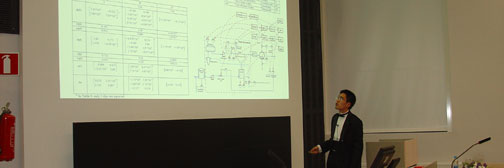| | Year 2001
Samuli BergmanMonitoring of an Dearomatization Process
Early detection and identification of abnormal and undesired process states are essential requirements for safe and reliable processes. This helps to reduce the amount of production losses during abnormal events. The aim of this thesis was to study different fault detection and process monitoring methods applied in the chemical process industry and to compare the performance of these methods in monitoring an industrial dearomatization process.
In the literature survey part of this study, different methods used for monitoring and fault diagnosis of chemical processes are discussed. Artificial neural networks, fuzzy logic and statistical multivariate methods are replacing the quantitative causal models that have traditionally been used for process monitoring.
In the experimental part of the study, the performance of Kohonen self-organizing maps and statistical multivariate methods, principal component analysis (PCA) and partial least squares (PLS), in monitoring a dearomatization process are compared.
The data that were used in constructing the monitoring models were collected using a dynamic process simulator. The simulator model was modified to correspond to an industrial dearomatization process. Both normal state and different fault conditions were simulated. The process phenomena that were selected for simulation were an internal leakage in a heat exchanger, fouling of a heat exchanger and channeling of the catalyst.
The best PLS-model had six input and four output variables. The model was able to detect 53 percent of leakage cases, six percent of fouling cases and 69 percent of channeling cases as abnormal events. The advantage of the PLS-method is its ability to detect even novel faults.
The self-organizing maps were constructed separately for each abnormal state. The channeling of the catalyst was identified most reliably. The principal component pre-processed map was able to identify 94.5 percent of the channeling cases. The pre-processed map trained for leakage was able to identify 78 percent of the leakage cases. The detection of fouling was unreliable, since only 42 percent of the fouling cases were identified. The advantage of the self-organizing maps is that they are easy to use, since the map with colored neurons is very visual. The principal component pre-processing improves the maps’‘ ability to classify process states.
The variables have a significant effect on the performance of the models. The variables should be selected based on both principal component analysis and process knowledge. Constructing computational variables that describe the monitored process phenomena is of great importance
Deprecated: strlen(): Passing null to parameter #1 ($string) of type string is deprecated in C:\WWWroot\Root\incs\5_theses\theses_new2010.php on line 248
This info last modified 27 Apr 2024 - contact webmaster
|

